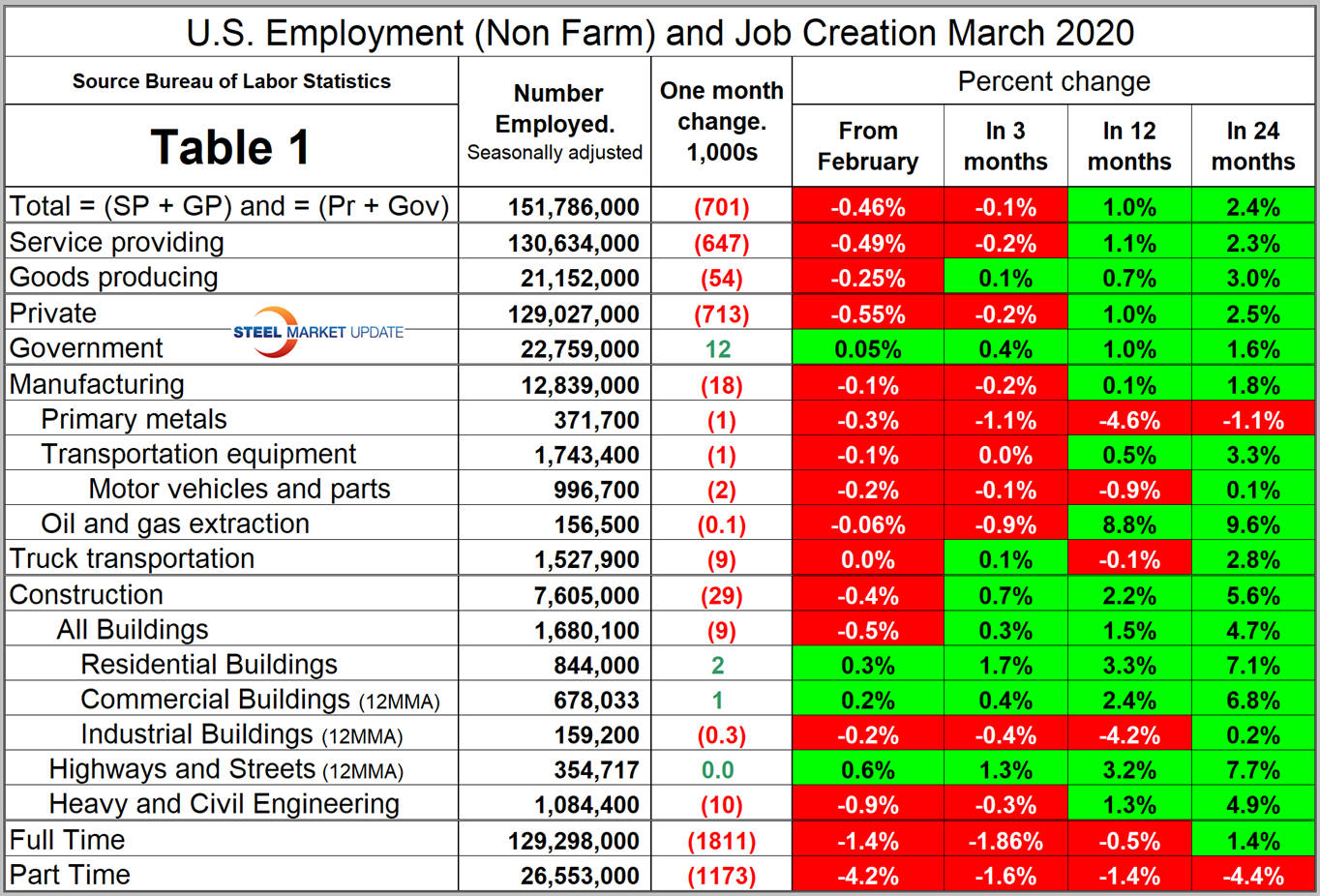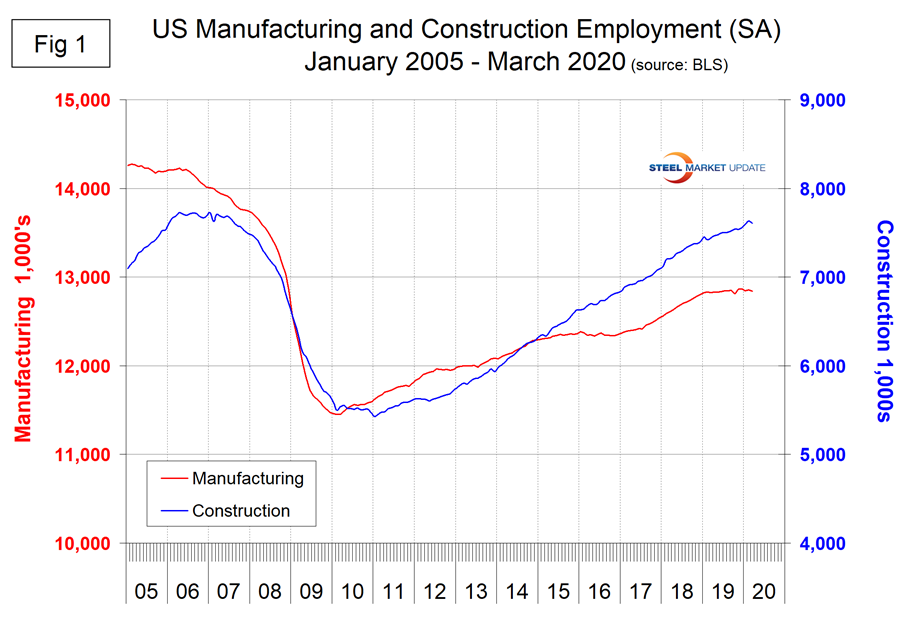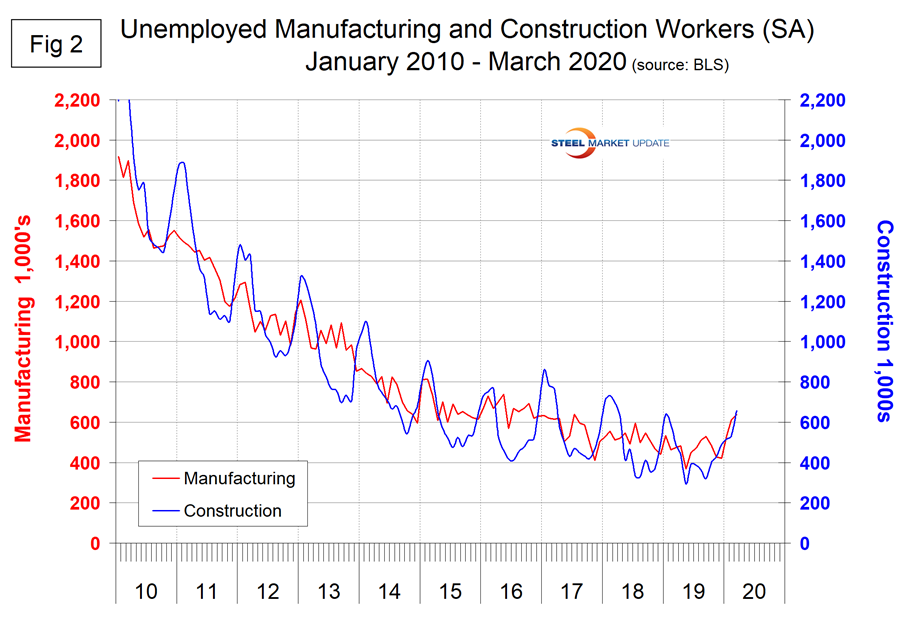Economy

Employment by Industry in March
Written by Peter Wright
April 6, 2020
The U.S. lost a net 701,000 jobs in March as the economy struggled with the coronavirus, and the labor situation is expected to be much worse in April. The brunt of March’s employment decline was felt by service industries. In the coming months, manufacturing and construction jobs will suffer more as well.
Table 1 breaks total employment down into service and goods-producing industries and then into private and government employees, based on data from an interim report from the Bureau of Labor Statistic for the first half of March. Most of the goods-producing employees work in manufacturing and construction; the components of these two sectors of most relevance to steel people are broken out in Table 1. Note, the subcomponents of both manufacturing and construction shown in Table 1 don’t add up to the total because we have only included those with the most relevance to the steel industry.

March data only accounts for the first half of the month and through that period the effect of the pandemic on manufacturing and construction employment was minimal (Figure 1).

This month we have created new charts showing unemployment in manufacturing and construction industries. These are shown in Figure 2 and through the latest data didn’t show the magnitude of the situation. This will change in our April report. In March, service industries such as retail saw the biggest job declines. Service industries lost 647,000 jobs as goods-producing (mainly construction and manufacturing) lost 54,000 positions.

Explanation: On the first or second Friday of each month, the Bureau of Labor Statistics releases the employment data for the previous month. Data is available at www.bls.gov. The BLS employment database is a reality check for other economic data streams such as manufacturing and construction. It is easy to drill down into the BLS database to obtain employment data for many subsectors of the economy. The important point about all these data streams is the direction in which they are headed.

Peter Wright
Read more from Peter WrightLatest in Economy

Chicago Business Barometer falls back in April, remains in contraction
The Chicago Business Barometer declined in April, reversing March’s gains, according to Market News International (MNI) and the Institute for Supply Management (ISM).

Fewer manufacturers optimistic about the economy
PMA’s April report shows that only 16% of surveyed manufacturers anticipate an increase in economic activity in the next three months (down from 23% in March)

Architecture billings continue to slide in March
Architecture firms said billings continued to decline in March, according to the latest Architecture Billings Index (ABI) released by the American Institute of Architects (AIA) and Deltek.

Beige Book shows concerns about trade policy
Manufacturing was mixed, but two-thirds of districts said activity was little changed or had declined.

New York state manufacturing index drops again in April
Firms were pessimistic, with the future general business conditions index falling to its second lowest reading in the more than 20-year history of the survey
